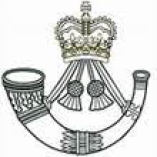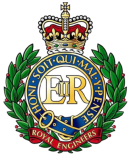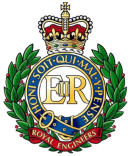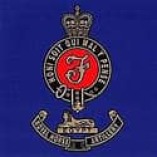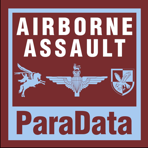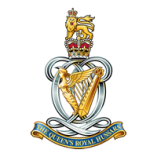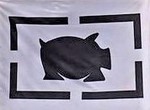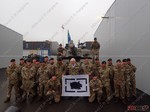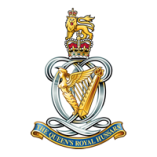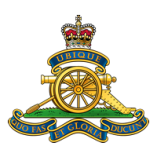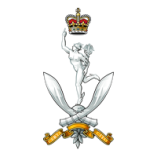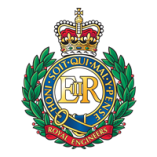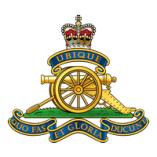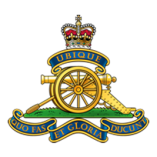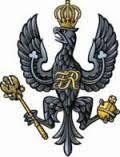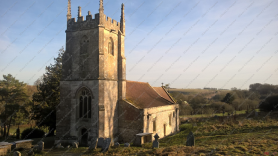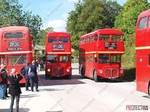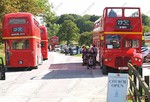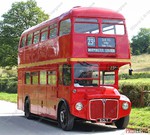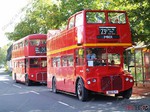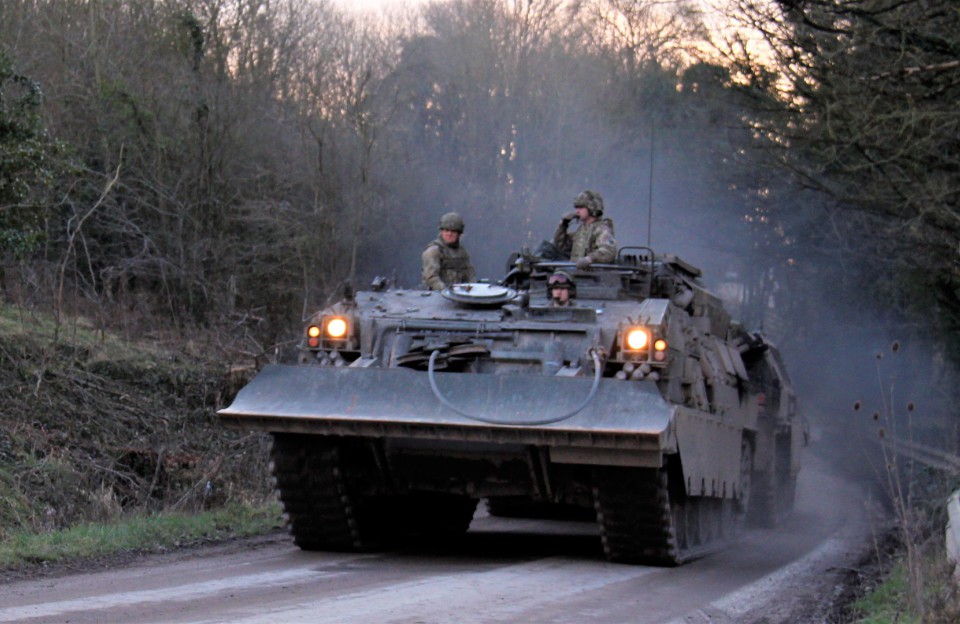
2021 Military on Salisbury Plain
The SPTA Newsletter is now available on line. I hope you find it useful.
www.gov.uk/government/publications/salisbury-plain-training-area-spta-newsletter
RAF Puma Flypast - 26.11.21
RAF helicopters are performing a national flypast over England. These photographs were taken this morning on the East Of Salisbury Plain. This is an area that
the helicopters have spent many hours flying over, a very common sight for several years.
The Puma helicopter has completed 50 years of service - and the impressive milestone was marked with a commemorative flypast.
The event saw formation of up to 10 Royal Air Force aircraft leave RAF Benson and fly over some of the Puma Force’s most significant UK locations, including Sandhurst and
RAF Shawbury.
RAF Benson explained in a Facebook post: “This includes sites that hold historical significance for the Puma Force as well as those that provide support to delivering
current Puma operational capability.”
5 Rifles - 21.11.21
The Rifles is an infantry regiment of the British Army. Formed in 2007, it consists of five Regular battalions and three Reserve battalions, plus a number of companies in
other Army Reserve battalions. Each battalion of The Rifles was formerly an individual battalion of one of the two large regiments of the Light Division. Since formation the regiment has been
involved in combat operations, first in the later stages of the Iraq War and in the War in Afghanistan.
5 Rifles Bulford
5 RIFLES is based in Bulford, Wiltshire as an Armoured Infantry battalion, equipped with the Warrior Armoured Fighting Vehicle. As one of the most potent war-fighting
infantry battalions, it is a part of the 20th Armoured Infantry Brigade within 3rd (UK) Division.
Having been the last unit in Afghanistan in 2014, it was the first to be deployed in NATO’s Enhanced Forward Presence in Estonia (Operation CABRIT). The Battalion has
previously served in Iraq, and has a reputation for being the first in and last out on operations.
As the largest of The Rifles Regular Battalions, 5 RIFLES has supported the other Battalions for overseas exercises in the US, Kenya and Belize, in addition to its own
regular training commitments in Canada and the USA.
5 RIFLES is the Regiment’s champion for cross-country and cricket but maintains a host of sports teams including rugby and football. Adventurous Training is also popular,
and during the first deployment in Estonia, the Battalion sailed a yacht out to the Baltic from the UK, before returning at the end of Op CABRIT 1.
36 Engineers - 19.11.21
The 36 Engineer Regiment is a regiment of the Corps of Royal Engineers within the British Army. The regiment trace their history back to before World War II as 36 Army
Engineer Regiment. The regiment today is a general support engineer regiment provided force support within 12 (Force Support) Engineer Group.
36 Engineer Regiment's predecessor was 36 Army Engineer Regiment which saw service in World War II. There is not much information written about this unit but it is known
it was based in Germany when the war ended. In 1949, the regiment moved to Invicta Park Barracks in Maidstone, Kent.
Bushmaster - 18.11.21
The British Army acquired 24 Bushmasters in April 2008 specifically for use in Iraq to support Task Force Black and United Kingdom Special Forces (UKSF) operations around
Basra. The heavily modified vehicles, known as the Escapade, were used to provide armoured transport for strike teams.
The Australian-built Bushmaster IMV is a fully enclosed and armoured troop carrier, specifically designed to protect against IEDs and mines. It is believed that the
Bushmasters were initially earmarked for use by the SAS operating in Iraq. The SAS's role in Iraq was significantly different from the more traditional long range patrols to which the DPV and HMT
400s are more suited. Often working in urban areas, the SAS required an enclosed armoured vehicle to move around in. The Bushmaster's deployment has increased the SAS's interoperability with American
forces, who operate similar armoured vehicles. UKSF Bushmasters were later deployed in the fight against ISIS in Iraq and Syria.
The IMV's V-shaped hull is designed to deflect the blast of an explosion away from the crew and passenger compartments, greatly increasing their chance of surviving an
IED or mine strike. The vehicle's armour protects against shrapnel and can withstand small arms fire up to and including 7.62mm ball. The armoured glass windscreen offers similar levels of
protection.
The Bushmaster can accommodate a driver and up to 9 soldiers with provisions for air conditioning, cool drinking water system, personal weapons storage and a
communications station. 4 Lockable roof hatches serve as potential firing ports and emergency escape routes.
Gun mounts on 1 front and 2 rear hatches allow for the mounting of light and medium machine guns such as GPMGs as well as 40mm HK GMG grenade launchers or HMGs. UKSF
variants of the Bushmaster - known as 'Escapade' - feature a remote weapon system (RWS) which allows for a HMG/GMG to be operated from inside the vehicle. UKSF Escapades are up-armoured, are fitted
with bull bars for breaching barricades and wire cutters to protect 'turned out' personnel standing in the hatches, and anti-IED electronic countermeasures.
22 Engineers - 17.11.21
These photographs were were taken on the East of Salisbury Plain.
The exercise involved mine clearance with Trojan and bridge laying, using Titans and Unipower vehicles. There was also a river crossing at a separate location where
vehicles were driven through the river.
Vehicles
Titan is an armoured engineer vehicle designed to enable troops and vehicles to cross gaps of up to 60 metres by laying a selection of close support bridges.
Along with Trojan, it gives a common heavy armour fleet, based on the Challenger 2 Main Battle Tank chassis.
Titan can carry and lay the current range of in-service close support bridges, providing ground manoeuvre formations with improved capability, giving them greater
flexibility. Improved visibility is achieved by incorporating direct and indirect vision systems including low light, image intensifying and thermal imaging capabilities. The interior, and to
some extent the exterior, of the vehicles have been designed around the crew station positions.
Titan has the flexibility to support a wide range of operations, including humanitarian missions.
The Royal Engineer BR-90 family is composed of bridges capable of Close and General Support and the associated wheeled support vehicles. The bridges are built from
interchangeable modular components.
Originally designed for Load Class 70 tracked vehicles, the bridges may be crossed by vehicles of up to Load Class 85 under strict safety conditions which accommodates
the increase in Load Class of Challenger 2 variants. The bridges have two interconnecting track ways with a 4 meter overall bridge width and 1 meter girder.
The Challenger Armoured Repair and Recovery Vehicle (CRARRV) is a highly evolved armoured vehicle designed to recover and repair damaged tanks on the
battlefield.
The vehicle has two winches, main and auxiliary, and an Atlas hydraulically operated crane capable of lifting a complete Challenger 2 power pack.
Trojan is an armoured engineer vehicle designed to open routes through complex battlefield obstacles and clear a path through minefields. Improved visibility is
achieved by incorporating direct and indirect vision devices with low-light, image-intensifying and thermal imaging capabilities. The interior, and to some extent the exterior, of the vehicle has
been designed around the crew station positions.
Trojan has the flexibility to support a wide range of operations, including humanitarian missions.
The Terrier armoured digger is the Army’s most advanced engineering vehicle and it gives the Royal Engineers a state of the art capability that can be used to carry out a
variety of tasks both in the UK and on future operations.
Despite weighing 30 tonnes, Terrier is an agile and versatile piece of equipment that can reach speeds of almost 50 mph.
22 Engineers Regiment
Based at Swinton Barracks in Perham Down, near Tidworth, 22 Engineer Regiment provides Engineer Close Support to 1 Mechanized Brigade.
The Regiment consists of the following units:
* 6 Headquarters and Support Squadron.
* 3 Armoured Engineer Squadron.
* 5 Armoured Engineer Squadron.
* 52 Armoured Engineer Squadron.
* REME Light Aid Detachment.
Capabilities
Each Armoured Engineer Squadron provides close engineer support with Titan and Trojan Armoured Engineer vehicles and Combat Engineer sections. More specialised
capabilities are held in the Headquarters and Support Squadron, such as Reconnaissance, Design and Survey, Diving and Automotive Bridge Launching Equipment for the General Support Bridge.
Deployments
The Regiment deployed to Iraq on Operation TELIC 4 and more recently TELIC 10, providing engineer support not only to its brigade but also to other coalition
troops. This included force protection in Basra Palace, camp infrastructure in Baghdad and many other tasks. More recently the Regiment has deployed squadrons to Gibraltar on ceremonial
duties, to Belize for trade training and construction tasks, and to Canada for collective training in the Armoured and Counter Insurgency roles.
7th Parachute Regiment Royal Horse Artillery - 09.11.21
7th Parachute Regiment Royal Horse Artillery (7 Para RHA) is a regiment of the Royal Artillery in the British Army. It, as of 2015 serves in the field artillery
role with 16 Air Assault Brigade, and is equipped with the L118 Light Gun.
The Regiment was formed on 27 June 1961 with the re-designation of 33rd Parachute Light Regiment Royal Artillery as 7th Parachute Regiment Royal Horse Artillery. The
Regiment first saw action in the middle-east in Kuwait in 1961 and then in Aden in 1963-5 where the Regiment was involved in fierce fighting in the Radfan mountains. The 1970s and 80's saw the
Regiment involved in four Northern Ireland tours in the Infantry role as well as a period where they briefly lost their Airborne status and were arms-plotted to Germany until 1984 when they joined
newly formed 5th Airborne Brigade and returned to Aldershot.
In 1994 the Regiment deployed to Cyprus as part of the UN mission to patrol the buffer-zone between Cypriot and Turkish forces. This was followed in 1996 and 7 with two
Battery deployments to Bosnia as part of the NATO mission and the Kosovo campaign of 1999.
Since the formation of 16 Air Assault Brigade in 1999, 7 Para RHA has been involved in numerous overseas operations. The Sierra Leone campaign in summer 2000 was followed
by Op Essential Harvest in Macedonia a year later and then two Batteries deployed to the Kabul area of Afghanistan in early 2002.
On the afternoon of 19 March 2003 7 Para RHA fired the first shots of the Iraq war by any coalition ground forces. The next day they crossed the border in support of the
US 1 Marine Expeditionary Force. The Regiment was instrumental in securing the strategic Rumalya oilfields and supporting the MEF in their move north to Nasiriyah.
In late 2003 the Regiment moved from Aldershot to Colchester to join the rest of 16 Air Assault Brigade. 2006 saw the first of the Regiments three tours of Afghanistan.
The first of these saw the Regiment play a key role in the break into Helmand province. This tour attracted much public attention and has often been described as the most intense combat fighting
since the Korean War of the 1950s. The Regiment returned to Helmand two years later and were again involved in heavy fighting – cumulating in the large scale operation to move a turbine from Kandahar
along a heavily mined and fiercely defended road to the Kajaki Dam.[5] 7 Para RHA's final deployment to Afghanistan saw the Regiment's gun groups and Fire Support Teams deploy to central Helmand
Province in order to provide offensive support to 16th Air Assault Brigade. They returned to Colchester in April 2011.
D Squadron (The Black Pig) - 07.11.21
Returning home from exercise at Copehill Down Village.
The Queen's Royal Hussars (The Queen's Own and Royal Irish) (QRH) is a United Kingdom armoured regiment. It was formed on 1 September 1993 from the amalgamation of the
Queen's Own Hussars and the Queen's Royal Irish Hussars. The regiment and its antecedents have been awarded 172 Battle Honours and eight Victoria Crosses. The regiment was based in Sennelager,
Germany, until 2019 when it was relocated to Tidworth Camp, England. It is the armoured regiment for 20th Armoured Brigade.
The regiment is equipped with 56 Challenger 2 tanks In addition the Regiment also fields a squadron with a close reconnaissance troop mounted in eight FV107
Scimitars.
· HQ Squadron
· A Squadron (The Devil's Children)
· B (Balaklava) Squadron (reformed as a command and reconnaissance squadron in October 2020, previously
an armoured squadron)
· C (Duke of Edinburgh) Squadron
· D Squadron (The Black Pig)
Dogma and Dublin (Dublin was renamed recently as was previously Diamond, seen here broken down with Fuel starvation, also seen here on deployment before the
name change)
The Queen's Royal Hussars on Exercise B Squadron - 06.11.21
Some of the photographs were taken at the families open day during the exercise and also during a night assault on a target where they can turn night into day with flares
etc.
The Queen's Royal Hussars (The Queen's Own and Royal Irish) (QRH) is a United Kingdom armoured regiment. It was formed on 1 September 1993 from the amalgamation of the
Queen's Own Hussars and the Queen's Royal Irish Hussars. The regiment and its antecedents have been awarded 172 Battle Honours and eight Victoria Crosses. The regiment was based in Sennelager,
Germany, until 2019 when it was relocated to Tidworth Camp, England. It is the armoured regiment for 20th Armoured Brigade.
QRH A Squadron (The Devil's Children) - 05.11.21
Returning home from exercise at Copehill Down Village.
The Queen's Royal Hussars (The Queen's Own and Royal Irish) (QRH) is a United Kingdom armoured regiment. It was formed on 1 September 1993 from the amalgamation of the
Queen's Own Hussars and the Queen's Royal Irish Hussars. The regiment and its antecedents have been awarded 172 Battle Honours and eight Victoria Crosses. The regiment was based in Sennelager,
Germany, until 2019 when it was relocated to Tidworth Camp, England. It is the armoured regiment for 20th Armoured Brigade.
The regiment is equipped with 56 Challenger 2 tanks In addition the Regiment also fields a squadron with a close reconnaissance troop mounted in eight FV107
Scimitars.
· HQ Squadron
· A Squadron (The Devil's Children)
· B (Balaklava) Squadron (reformed as a command and reconnaissance squadron in October 2020, previously
an armoured squadron)
· C (Duke of Edinburgh) Squadron
· D Squadron (The Black Pig)
26th Regiment Royal Artillery - 22.10.21
Divisional Fires Regiment
26th Regiment Royal Artillery is the Army’s Divisional Fires Regiment. Equipped with the Multiple Launch Rocket System (MLRS) and EXACTOR 2, the new Regiment
delivers precision strike munitions out to 84km in support of the Iron Division.
Upgrades to Multiple Launch Rocket Systems Strengthen Deep Fires Capability
Following a recent agreement struck with the United States Department of Defence, we will be embarking on a five-year programme to update our M270 Multiple Launch Rocket
Systems (MLRS).
The MLRS is a highly mobile automatic system that fires 12 surface-to-surface missiles in less than a minute.
Upgrades will be made to 44 launchers, which are currently in-service, and will include a new armoured cab and upgraded automotive and launch mechanism
components.
The upgrades will ensure that the Army’s Land Deep Fires capability remains strong for the next three decades and that the British Army has the technological capability
to quickly meet the threats of today and tomorrow.
Taking advantage of the long-standing MLRS collaboration with the US and key allies, work will start on upgrading the first tranche of launchers in March 2022 with the
fleet going through production over a four-year period. The upgrades will keep the equipment in service until 2050.
The work will be carried out under an existing production contract with Lockheed Martin Missiles and Fire Control with the work being carried out at Red River Army Depot
and Lockheed Martin's facility in Camden, Arkansas.
The UK is also developing UK-specific systems for the new launchers, including Composite Rubber Tracks (CRT), and a vehicle camera and radar system. A new Fire Control
System will be developed collaboratively with the US, UK, Italy, and Finland.
The CRT will provide better fuel economy and allow the launcher to travel further, giving greater operational and tactical mobility to support deployed troops in a range
of operating environments. A single launcher will be used to fire many payloads.
To ensure soldiers are not outranged, the Army will develop a new extended range missile with MLRS partners, to be fired from the updated launchers, which should be
in-service by 2025. The Guided MLRS Extended Range (GMLRS-ER) missile will extend the Army’s reach from 84 to 150km.
The 44 updated launchers will also be able to fire the US’s Precision Strike Missile (PrSM) which has a range of 499km and is expected in-service from 2024. These
weapons will place the British Army at the cutting edge of global deep fires capability, ready to respond to long range air defence and missile threats presented by hostile actors.
MLRS is owned by the Royal Artillery and is operated by 26 Regiment RA from Larkhill, Wiltshire and 101 Regiment RA (Reserves) of Gateshead, Tyne & Wear.
20th Armoured Infantry Brigade - 21.10.21
The Iron Division
3rd (United Kingdom) Division, based at the heart of the British Army on Salisbury Plain, is the only division at continual operational readiness in the UK.
'The Iron Division' is made up of 1st Armoured Infantry Brigade, 12th Armoured Brigade Combat Team, 20th Armoured Brigade Combat Team, 1st Artillery Brigade, 11 Signals
Brigade and 101st Logistic Brigade, 7th Air Defence Group and 25 (Close Support) Engineer Group.
The 3rd Division Today
3rd (United Kingdom) Division exists as the United Kingdom’s strategic land warfare asset.
As such the Division is able to bring to bear the considerable firepower of the British Army and concentrate the force which includes: Reconnaissance, Armoured Cavalry;
Armoured and Mechanised Infantry, Aviation, Artillery, Engineers and Logistics; in what is referred to as “the full spectrum” of warfighting capability.
Concentrating on continual combat readiness, 3rd Division stands by to protect the UK, its people and project our influence as a world class Army.
20th Armoured Infantry Brigade
The British Army’s 20th Armoured - The Iron Fist Brigade Combat Team
The British Army’s 20th Armoured Infantry Brigade Combat Team (The Iron Fist) is based in Wing Barracks, Salisbury Plain. It forms part of the 3rd (United Kingdom)
Division (The Iron Division), the Army’s primary warfighting force.
Soldiers serving with the Brigade Combat Team proudly wear the insignia of a white mailed fist on a blue background as a symbol of the hard punch that this historic and
battle-proven armoured formation can give any enemy. Lethal and Ready for 21st Century warfighting, The Iron Fist will have the privilege of providing the armoured forces held at high readiness to
both the UK and NATO from 1 Apr 20.
Infantry Brigade Combat Team
LEAD ARMOURED TASK FORCE (LATF) AND VANGUARD ARMOURED INFANTRY BRIGADE (VAIB)
2020 saw The Iron Fist as the LATF and VAIB; the UK’s leading armoured element on elevated readiness, supporting a rapid deployment to undertake any short notice
contingency tasks. The Iron Fist can operate within a UK, US, FR or NATO division for warfighting at scale. It provides the British Army’s best deterrence for the conventional defence of the
UK.
Operations and Exercises
The Iron Fist is currently deployed in over 10 countries around the world. Deployments vary in strength from single military advisors to full Combined Arms Battle
Groups.
The Iron Fist conducts various training exercises with the most notable being Combined Arms live and dry training at the British Army Training Unit Suffield (BATUS),
Canada. Once trained, Battle Groups from The Iron Fist will conduct operations in Estonia as part of NATO’s enhanced Forward Presence initiative; contribute to the UN Peace Keeping Mission in Cyprus;
provide a Battle Group to support Operation TORAL in Afghanistan; as well as providing a Company for Public duties at Buckingham Palace; all whilst poised to support UK resilience tasks.
Brigade Combat Team Units
- The Queen's Royal Hussars
- 1st Battalion The Royal Regiment of Fusiliers
- 5th Battalion The Royal Regiment of Fusiliers
- 1st Battalion The Mercian Regiment
- 4th Battalion The Mercian Regiment
- 5th Battalion The Rifles
- 7th Battalion The Rifles
249 Squadron - Based in Bulford - 20.10.21
The Queen’s Gurkha Signals (QGS) is a regular unit of the Royal Corps of Signals, one of the combat support arms of the British Army. Together with The Royal Gurkha
Rifles, the Queen’s Gurkha Engineers, the Queen’s Own Gurkha Logistic Regiment, the Band of the Royal Gurkha Rifles and the Gurkha Staff and personnel Support they form part of the Brigade of
Gurkhas. QGS was formed during The Malayan Emergency to support the 17th Gurkha Division.
The Squadrons
The Queen's Gurkha Signals Squadrons located across the UK.
§ 246 Squadron - based in York
§ 247 Squadron - based in Stafford
§ 248 Squadron - based in Stafford
§ 249 Squadron - based in Bulford
§ 250 Squadron - based in Bramcote
Exercise Iron Storm has been brought to a halt - 15.10.21
Following a 05:00 start Exercise Iron Storm was brought to a halt.
This was due to a very serious incident which took place during the morning of this exercise. (For this reason and as a mark of respect, all of our
photography was halted and publications withdrawn and put on hold, until we made sure it would be correct to produce anything).
All the vehicles and crews were stationery, where they were when the incident happened. It was not known at the time what would happen next. The exercise was
completely abandoned at 19.00.
We later heard that a serving soldier had sadly lost his life in the incident. Our thoughts are with his Family and Regiment.
22 Engineers Regiment Titan Bridge Layer - 14.10.21
October will see the largest armoured exercise we have hosted on SPTA for some time. EX IRON STORM will have large numbers of armoured vehicles manoeuvring across all of SPTA both day and night. The various schools and local units will also be training throughout this month. SPTA will be in constant use both day, night and at the weekends in order that users can achieve their training objects.
This is the exercise normally run at BATUS in Canada, this has not happened for 2 years, this year it is using SPTA for 6 weeks starting this weekend.
The Exercise ends on the 23rd October.
We have been out this week to see the build up of equipment, see attached for a few of the sites.
All the pictures attached were taken this week on the East Of Salisbury Plain.
Several armoured units have been at Castle Martin Wales for live firing exercise over the past 4 weeks.
They arrived back here on Salisbury Plain this week.
The whole battle group were held in a holding area near the Penning’s.
All vehicles, around 300 had to cross the Titan Engineers bridge, before they were allowed to take part in the Exercise.
The whole Battle group were set up for the week until the Salisbury Plain part of the Exercise started, at 5am on the Friday.
Titan is an armoured engineer vehicle designed to enable troops and vehicles to cross gaps of up to 60 metres by laying a selection of close support bridges. Along with Trojan it gives a common heavy armour fleet based on the Challenger 2 Main Battle Tank chassis.
Titan can carry and lay the current range of in-service close support bridges, providing ground manoeuvre formations with improved capability, giving them greater
flexibility.
Improved visibility is achieved by incorporating direct and indirect vision systems including low light, image intensifying and thermal imaging capabilities. The
interior, and to some extent the exterior, of the vehicles have been designed around the crew station positions.
Titan has the flexibility to support a wide range of operations, including humanitarian missions.
22 Engineers Regiment
Based at Swinton Barracks in Perham Down, near Tidworth, 22 Engineer Regiment provides Engineer Close Support to 1 Mechanized Brigade.
The Regiment consists of the following units:
* 6 Headquarters and Support Squadron.
* 3 Armoured Engineer Squadron.
* 5 Armoured Engineer Squadron.
* 52 Armoured Engineer Squadron.
* REME Light Aid Detachment.
Capabilities
Each Armoured Engineer Squadron provides close engineer support with Titan and Trojan Armoured Engineer vehicles and Combat Engineer sections. More specialised
capabilities are held in the Headquarters and Support Squadron, such as Reconnaissance, Design and Survey, Diving and Automotive Bridge Launching Equipment for the General Support Bridge.
Deployments
The Regiment deployed to Iraq on Operation TELIC 4 and more recently TELIC 10, providing engineer support not only to its brigade but also to other coalition
troops. This included force protection in Basra Palace, camp infrastructure in Baghdad and many other tasks. More recently the Regiment has deployed squadrons to Gibraltar on ceremonial
duties, to Belize for trade training and construction tasks, and to Canada for collective training in the Armoured and Counter Insurgency roles.
Ex Iron Storm - 13.10.21
All these photographs were taken this week on the East of Salisbury Plain.
Several armoured units have been at Castle Martin, Wales for live firing exercise. They arrived back here on Salisbury Plain this week.
October will see the largest armoured exercise hosted on SPTA for some time. EX Iron Storm will have large numbers of armoured vehicles manoeuvring across all
of the SPTA both day and night. The various schools and local units will also be training throughout this month. SPTA will be in constant use both day, night and at the weekends in order
that users can achieve their training objects.
This is the exercise normally run at BATUS in Canada, this has not happened for 2 years, this year it is using SPTA for 6 weeks starting this weekend.
The Exercise ends on the 23rd October.
Bravo River Crossing - 12.06.21
Copehill Down - Part of Salisbury Plain Training Area - 09.01.21
Extract from Wikipedia
Copehill Down is a Ministry of Defence training facility near Chitterne on Salisbury Plain, Wiltshire, England. It is a 'FIBUA' (Fighting In Built Up Areas) urban warfare
and close quarters battle training centre, where exercises and tests are conducted.
The site lies in open ground in the northeast of Chitterne parish, between Chitterne and Tilshead.
The facility was built in 1987 to resemble a German village in Bavaria, to provide troops with a simulated backdrop when training for operations in European theatres
including the Cold War, the Balkans and Northern Ireland.
The facility includes a shanty town made up of cargo containers stacked and laid out in rows of tightly packed streets, to provide an additional training area that more
closely resembles the Army's operational theatres in Operation Herrick and Operation Telic.
Non-combat access to Copehill Down is generally restricted, however the facility has been used for airsoft wargaming and by historical reenactment societies, which take
part in private reenactments of battles.
Imber - 02.01.21
A small village in Wiltshire called Imber is famously known as the ‘Ghost village’ of the Second World War. During World War II. Imber residents were evicted with
just 47 days notice during World War II, it was then turned into a military facility where soldiers received training for the D-Day landings in Normandy.
Before WWII broke out, Imber’s community consisted of 170 residents. The government had started buying land around the village for a while before, and in the year 1940,
the small community of Imber was asked to look for new houses and jobs elsewhere, leaving their village forever. Most of the town was then turned into a military training facility. Soldiers needed
intense training prior to the Normandy invasion, due to the crucial nature of the campaign. Training soldiers before the actual invasion turned out to be a wise decision. The Normandy invasion
enabled the Allied forces to hit deep into Nazi-controlled territory, eventually forcing them to retreat from France and Belgium.
The training area of Imber was also used later by the Ministry of Defence to train troops operating in Northern Ireland during the IRA crisis. In Northern Ireland, the
British army faced a different sort of warfare, which was novel to most of the soldiers. At Imber, soldiers were trained in patrolling a residential area and manoeuvring in case of an ambush or a
sniper attack.
The residents of Imber did not resist the military’s orders to move, primarily because they thought they were doing a service for their country at war. Initially, they
thought that after the war they were going to come back, but they were never given permission to return.
It was never handed back and to this day remains a training ground for urban warfare. It is open to the public only on selected days. The only residents allowed back are
those who have died, to be buried there in the church graveyard.
The following is a copy of the letter sent to tenants to vacate:
For Cottage Tenants holding direct from W.D. [War Department]
W.D. Estate Office,
Durrington,
Wilts.
Dear Sir/Madam
Imber Training Area
Arising out of the decision that increased training facilities are to be made available in the Imber area, I regret to inform you that it is necessary to evacuate the
major part of the Department's Imber Estate, including your dwelling.
To this end I enclose you formal notice to quit. The area has to be evacuated and made available for training by Dec 17th. In this connection you will note that the
formal notice to quit expires on and it is confirmed that there will be no objection, if it assists you, to your remaining in your dwelling as tenant on sufferance until a date not later than Dec
17th 1943.
It is appreciated that apart from the distress the move will cause you, it must inevitably occasion direct expense for which you have no legal redress against the
Department. It is however, desired to assist you in this direction as far as is practicable and equitable, and I am directed to state that the Department is prepared in principle but without
prejudice to refund to you reasonable expenses incurred by you in respect of the removal of your furniture to your new home, and the travelling expenses thereto of yourself and members of your family
at present living with you. In addition, if you are so unfortunate as not to be able to find alternative accommodation, and it is necessary to remove your furniture to store, the Department will
refund the cost of removal to store and reasonable storage charges until you can find another house, or until the Imber area is again open for occupation, whichever is the earlier.
Further the Department is prepared if you so desire to take over from you by valuation, any produce in your garden which you are unable to harvest and take with you, and
I shall be glad if you will let me have as soon as possible any claim you wish to make under this head.
Yours faithfully,
A.O. Thorne
Lieutenant. Colonel,
Command Land Agent
Southern Command.
Urban Warfare Training Units
Perhaps the most fascinating feature at Imber is this purpose-bult military training area, with simple rectangular houses for training troops in house to house combat.
The Uran Warfare units were used to prepare troops for combat in places like Northern Ireland, Kosovo, and Afghanistan.
‘Imberbus’ service running from Warminster to the lost village of Imber
THE annual heritage ‘Imberbus’ service running from Warminster to the lost village of Imber and other isolated locations on Salisbury Plain, Wiltshire makes a return in
August each year to raise funds for charity.
Imber village, in the middle of Salisbury Plain, was evacuated in 1943 by the Army to allow it to be used as a training area in advance of D-Day.
Other than a few days each year, Imber village has been out of bounds to the public ever since. The 16th century St Giles's Church, looked after by volunteers with
the Churches Conservation Trust, remains and is well worth a visit.
This most unusual bus service across the Plain not only allows people to get a fascinating and rare glimpse of Imber, it allows a day out visiting Tilshead, Chitterne and
the Lavingtons where you can eat and drink in village halls and country pubs. There’s nothing quite like traversing Salisbury Plain from the top of a red double decker bus.
The use of a combination of historic red London double-deck Routemaster buses and the newer, but no less iconic, wheelchair accessible New Routemasters to take visitors
along the route.
The Imberbus event was first run in 2009 as a one-off, however it proved so popular that it has been run every year since then, as it continues to attract lots of
attention as well as helping raise money for charity.
It recently raised £13,000 which was split between the Friends of St Giles’s Church and the Royal British Legion.
St Giles Church
Beside the urban warfare units a paved road leads uphill to St Giles Church. The church dates to at least the 13th century, and stands on the site of an earlier Norman
church. The super Perpendicular west tower was added in the 15th century. The most interesting feature is a series of medieval wall paintings, including the Weighing of Souls, and the Seven Deadly
Sins. On unusual highlight is a painted mural under the tower depicting plain changes for bell-ringers. Think of them as a musical score for bell-ringers. The pain changes mural dates to 1692 and is
thought to be the oldest in England. St Giles is a wonderful medieval church and is worth worth a trip to explore on open days. One day in the year it is sure to be open is the closest Sunday to St
Giles's Day.
Baptist Chapel Burial Ground
Immediately east of The Bell a signposted trail leads across the grass to an overgrown fenced area to the cemetery for the Baptist chapel. The chapel itself stood further
up the slope, but was pulled down in the 1970s. Though the cemetery is overgrown, you can wander about and view quite a number of old gravestones. You can also get a very good view of the nearby
council houses.
Over half of Imber's residents belonged to the Baptist movement. Until 1833 they had to worship in local houses, but in that year a new chapel was built, for a total cost
of £238. In 1858 a school was attached to the chapel. The school had an attendance of twice the Church of England school. It eventually closed in 1895 when state-funded education became the
norm.
The Bell
This building was a pub known as The Bell.
Council Houses
The next place to see two large council houses, erected in 1938, just 5 years before the village was deserted. There were originally 8 council houses, but 6 of these were
pulled down by the military.
Nag's Head Cottages
If you carry on east past St Giles Church you will see the Nag's Head Cottages on the opposite side of the road. This set of two semi-detached cottages take their names
from the former Nag's Head pub which formerly occupied the property. Records are scanty, but the pub seems to have closed in the early 19th century, and the cottages were used as dwellings after that
time.
Imber Court
On the opposite side of the main road from the Bell Inn and the Baptist cemetery you will find high stone walls enclosing Imber Court, a beautiful 17th century manor
house, rebuilt in the 18th century. The Court was damaged by fire in 1920 and restored. It was built by the Wadman family, lords of the manor during the 17th and 18th centuries. When the Wadman's
sold the Court it was used as an academy for young gentlemen before the Dean family took ownership. The Dean's were lords of the manor throughout the 19th century and owned 3 local farms.
Nothing now remains of the Court's gardens and lawns, and barbed wire along the stone wall belies the elegance of the historic buildings beyond. You can still see traces
of an avenue of trees leading to the dog kennels. A lane runs past the Court towards Imber Court Farm, but the lane is closed to visitors.
Seagrams Farm This is one of only six of the remaining original buildings that remain in the village of Imber. The rest of the buildings were destroyed by the Army in the
years following their takeover in 1943. Segrams farm has the date 1880 above the door.
